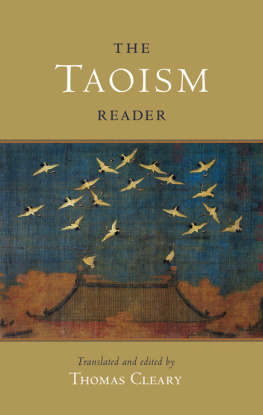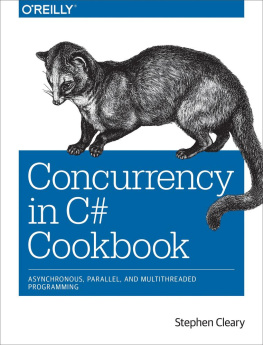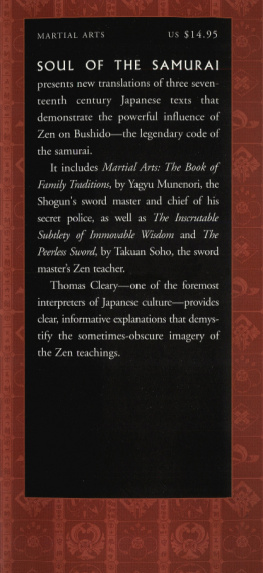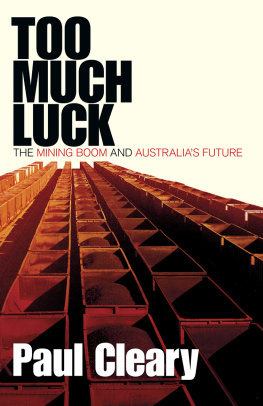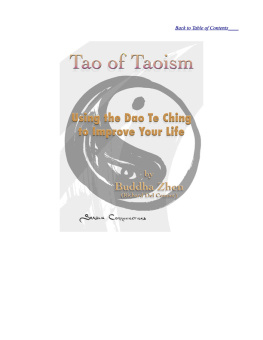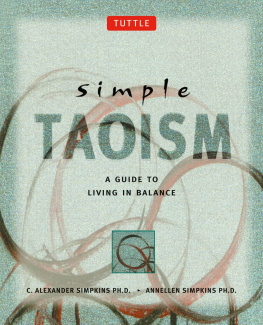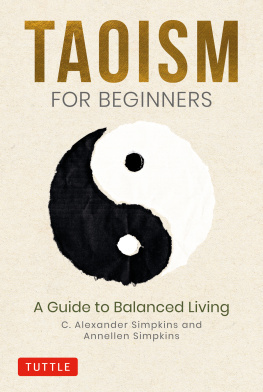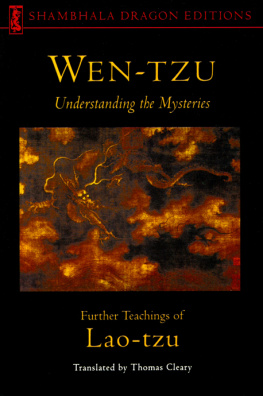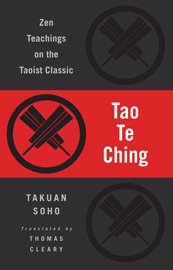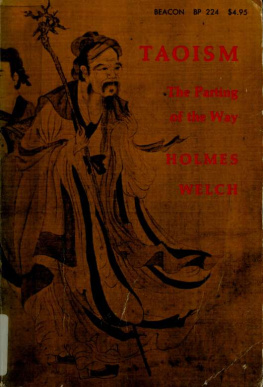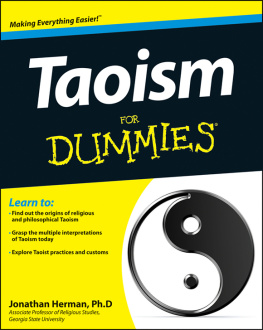ABOUT THE BOOK
From the time of its earliest sages in prehistoric China, Taoism has looked to the underlying Way of all things (the Tao) as a guide to thoughts and actions. For the Taoists, the patterns of nature revealed the answers to their deepest spiritual questions and provided the inspiration for their unique teachings. Over the centuries, Taoism has blossomed into a profound tradition with a variety of formsall united by a single, core philosophy of radical simplicity and natural living. Today, Taoism is most widely known through the Tao-te Ching, yet its corpus of literature is vastranging from philosophical dialogues and essays to astonishing fables, legends, proverbs, and more. This compact collection of Taoisms greatest masterpieces introduces its most fundamental teachings and reveals the essential spirit of Tao.
The Taoism Reader includes:
- Tao-te Ching: the foundational source of Taoist thought by the legendary Lao Tzu
- Chuang-tzu: philosophical dialogues from one of Taoisms most famous sages
- Huai-nan-tzu: teachings from the time of the Han dynasty on affairs of state, natural science, and Taoist psychology
- Wen-tzu: records of further sayings by Lao Tzu on the art of living
- Tales of Inner Meaning: fables, stories, and jokes from the Lieh-tzu and others on the subtleties of Taoist philosophy
- Sayings of Ancestor L: teachings from L Yen, a seminal figure in the founding of the Complete Reality school of Taoism and master synthesizer of Chinas classic spiritual traditions
THOMAS CLEARY holds a PhD in East Asian Languages and Civilizations from Harvard University and a JD from the University of California, Berkeley, Boalt Hall School of Law. He is the translator of over fifty volumes of Buddhist, Taoist, Confucian, and Islamic texts from Sanskrit, Chinese, Japanese, Pali, and Arabic.
Sign up to learn more about our books and receive special offers from Shambhala Publications.

Or visit us online to sign up at shambhala.com/eshambhala.
The
TAOISM READER
Translated and Edited by
THOMAS CLEARY

SHAMBHALA
Boston & London
2012
Shambhala Publications, Inc.
Horticultural Hall
300 Massachusetts Avenue
Boston, Massachusetts 02115
www.shambhala.com
1991, 1993 by Thomas Cleary
Cover art: Emperor Huizong. Cranes of Good Omen. Northern Song dynasty, early 12th century. Handscroll; ink and colors on silk; 51 x 138.2 cm. Liaoning Provincial Museum, Shenyang.
This book was previously published as The Spirit of Tao.
All rights reserved. No part of this book may be reproduced in any form or by any means, electronic or mechanical, including photocopying, recording, or by any information storage and retrieval system, without permission in writing from the publisher.
Library of Congress Cataloging-in-Publication Data
The Taoism reader/translated and edited by Thomas Cleary.
p. cm.
Includes bibliographical references.
eISBN 978-0-8348-2780-6
ISBN 978-1-59030-950-6 (pbk.: alk. paper)
1. TaoismSacred booksQuotations.
I. Cleary, Thomas F., 1949 II. Title.
BL1900.A1S65 2011
299.51482dc23
2011028691
CONTENTS
INTRODUCTION
Tao-te Ching
The Tao-te Ching is the most widely read of Taoist texts and the most universally accepted by followers of all Taoist orders. It has been dated variously, with estimates generally ranging from around 500 to 300 B.C.E. Although it is conventionally attributed to Lao-tzu, a semilegendary ancestor of Taoism, the Tao-te Ching is evidently not an original composition by an individual author, but contains redactions of even more ancient lore. In any case, it is one of the earliest sources of Taoist theory and praxis. The present anthology includes several key selections from the classic illustrating these teachings.
Chuang-tzu
The next great Taoist classic after the Tao-te Ching is the equally famous Chuang-tzu, or Book of Master Chuang, attributed to the philosopher Chuang-tzu, or Chuang Chou (ca. 369286 B.C.E.). Although it elaborates on many of the ideas of the Tao-te Ching, the Chuang-tzu is very different in its transmission and manner of presentation. Whereas the former text consists of proverbs and aphorisms, the latter is largely made up of allegorical stories interspersed with philosophical discussions. The Tao-te Ching, closely linked to ancient tradition, is attributed to a semilegendary sage and is very difficult to place historically with precision; the Chuang-tzu, on the other hand, is attributed to a clearly historical personage, and the marks of its time, during which the chaos and violence of the Warring States era rose inexorably toward a climax, are quite evident in the psychological mood and philosophical attitude of the text.
Huai-nan-tzu
The next great Taoist classic after Chuang-tzu is the Huai-nan-tzu (Huainanzi), or Masters of Huai-nan, composed approximately 150 years later in a very different social and political climate. Centuries of civil war had ended around 200 B.C.E. with the founding of the monumental Han dynasty, which was to rule China for the next four hundred years, with but a brief interruption in the early part of the first century C.E. Although the later impact of Buddhism was so great as to be immeasurable, nevertheless the culture of the Han dynasty left an indelible imprint, exerting a lasting influence on the development of Chinese civilization.
The early emperors of Han adopted a Taoist policy of minimalist government in order to allow the nation and its people to recover from the violence and destruction of the long era of Warring States. China had been united into an empire under the militaristic Chin dynasty in the middle of the third century B.C.E.; taking over from the Chin, the Han dynasty attempted to restore classical culture, which had been suppressed by the Chin government in favor of a mechanical form of legalism. One of the great patrons of this revival was Liu An, a grandson of the founding Han emperor and king of a small feudal domain. Known as the king of Huai-nan after the region where his fief was at one time located, Liu An opened his court to scholars and savants from all over the empire, developing it into a major center of learning and culture.
According to legend, the classic Huai-nan-tzu is the product of an inner circle of eight Taoist sages at Liu Ans court. This group of wizards is said to have appeared at court when it was already in full bloom as a seat of arts and sciences. Challenged by the king to demonstrate knowledge not already represented at his illustrious court, the eight ancients proceeded to astound him with uncanny displays of occult powers. Duly humbled, the king of Huai-nan welcomed the sages and apprenticed himself to them. The Huai-nan-tzu purports to be records of their talks.
Because of the historical circumstances of its origin, the Huai-nan-tzu contains a great deal of material relating to political science and affairs of state; but it also synthesizes other aspects of Taoism, including natural and spiritual sciences. In this respect it is the richest of the early Taoist classics. The dissemination of these teachings was inhibited, however, by two events: the downfall and disappearance of Liu An, victim of an intrigue; and the official adoption of a form of Confucianism as the orthodox system of thought and education throughout the empire. The brand of Confucianism that won the imperial stamp of approval was really a hybrid of Confucianism, legalism, and a peculiar cosmology that revived the ancient doctrine of the divine right of kings and bestowed on it the dignity and authority of natural law.
Next page
